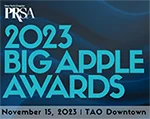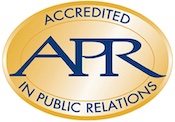That would seem like an obvious truth so why is it being disregarded almost universally in PR?!
Surowiecki was writing about Yahoo’s decision to ban telecommuting. Too many employees were spending too much time at home and are failing to “engage” with fellow employees, said CEO Marissa Mayer.
“Telecommuting” has become standard in PR/press relations and is in contrast to previous practice in which PR people tried their darnedest to bond with reporters.
This reporter’s first 20 years covering business in New York (New York Journal-American, Chicago Tribune and then own business in 1968) were marked by a full-court press by PR people not only to meet with us but to become close, personal friends.
My wife and I were invited to dozens of homes of PR people, sometimes staying overnight or for a weekend. Our children played with their children. They came to our home.
Spending “quality time” with reporters and editors was the goal of PR people. This involved golf outings topped by a dinner; holiday parties by the dozen by blue chip companies; endless dinners and Broadway shows; sporting events and other entertainments hosted by PR people and their spouses, and a steady stream of gifts.
If PR people could not get reporters to go to shows and other events, they would sit by your desk and gossip.
Corp. Press Contact Virtually Eliminated
One reason for the growth of agency PR, as shown by the O'Dwyer's rankings published March 11, is that corporations have offloaded their press contacts to outside counsel. Corporate PR, when there is such a function, finds it “too dangerous” to get involved in unscripted, free-wheeling interface with reporters.
Quite often no names are available of press contacts but only a blank web box where questions may be posed. Our calls to companies on one topic or another are usually bucked to a PR firm. Corporate PR does not want its “fingerprints” on anything. We asked Coca-Cola a month ago (in writing as demanded by PR) about its PR internship program and have yet to get an answer.
Variety editor Peter Bart’s column April 9, 2011 headlined “For Publicists, Evasion Overrules Promotion.”
He pined for the “good old days” when publicists hounded him. “Today, publicists seem to be locked in their bunkers doing damage control. Their clients want to hide, not to hustle. They want protection, not promotion,” he wrote.
New York Times columnist David Carr wrote Jan. 29, 2012 that executives “hide behind a wall of communications operatives” who dole out “slop.” Washington Post columnist Gene Weingarten wrote May 3, 2012 that it is “a ludicrous lie” that PR people are “close to the media.”
PR/press Relationship Broken, Says Prof
 Roush Roush |
He was quoted by Peter Himler, who operates “The Flack” blog and had gone to the school in early March to give a talk on PR.
Roush, named Journalism Teacher of the Year by the Scripps Howard Foundation in 2010, has written two books on business journalism and blogs on www.talkingbiznews.com.
Himler calls it “must read” for business journalists and PR people.
Himler, president of the Publicity Club of New York, said he found that “some 60-70% of the UNC J students are majoring in advertising and PR rather than journalism.” He feels this is a “smart move” considering the challenges media face.
Students Must Be Told Truth
Students, including minorities (who are getting special attention at the Career Forum April 2), must be told about the acrimonious situation that exists between PR and reporters. We have never seen so much incivility.
Information is withheld routinely and often for no good reason at all.
For instance, PRSA COO Bill Murray said in the March Tactics that national conference cities for the next five years have been picked. However, he does not name them.
We asked for their identity in e-mails to Murray and VP-PR Arthur Yann but the requests have been ignored. Possibly some members will pry this information out of either but we doubt it. New York is not on the list, said Henry Feintuch, president-elect of the New York chapter. This means there will have been one Society national conference in New York since 1993 or one in 25 years. The city with the largest concentration by far of media, PR and related industries is snubbed by the Society.
Students Given Rosy Picture in Atlanta
Students who covered the Feb. 22 “Real World” career forum in Atlanta told us they got a rosy picture of PR as a calling that paid little but offered great emotional satisfaction and that students should learn to “love” PR.
All speakers stressed the importance of “ethics” to Society members without mentioning the Society’s own survey that showed half of its members are under “extraordinary pressure” to do unethical things.
There was nothing on the program about the rules for internships even though an Atlanta PR firm forced to pay $31,520 to 54 “interns” who had been working for nothing but whose time was billed to clients.
There was no panel on how to open your own business although this is the likely future for many grads. There was also no “literature” or “reading” table although it could have been stocked with useful directories, books and articles.
NYU Career Forum Targets Minorities
A PR career forum April 2 at New York University, sponsored by the local PRSSA chapter, the PRSA Foundation, PRSA/New York and the Council of PR Firms, is especially aimed at attracting minorities to PR. http://tinyurl.com/bu3ptra
 Germinder Germinder |
The PR community has long made noises about interest in minorities but this is not reflected in where PR executives at blue chips and major agencies put their money.
PRSA had $3.5 million in net assets and $4.8 million in cash/savings/investments as of Dec. 31, 2011. Its Foundation had $497,569 in the same three categories. CPRF had $778,979 in net assets and $850,141 in savings (no investments). The Arthur Page Society had $1,267,610 in cash/savings/investments. The Institute for PR had net assets of $219,191.
The National Black PR Society, meanwhile, had net assets of $38,002 in 2006, the latest tax return on file. The Black PR Society of New York does not file a return. The National Hispanic PR Society, founded last year and headed by David Henry, president of TeleNoticias, New York, has applied for 501c/3 non-profit status and does nor yet have an Employer Identification Number (EIN). Its Los Angeles chapter (EIN: 95-4000929) had assets of $57,030 as of Dec. 31, 2011.
A lot of funds are available for PR groups that have few minority members. What the minority groups get is lip service from the boards of these groups.
The hypocrisy is similar to that involving ethics. Speakers at the PRSA/Georgia career forum repeatedly said that “ethics” is the main concern of Society members. The Society, which had revenues of $10.7M in 2011, spent exactly $1,406 on ethics in 2011. That was a decline from $2,649 spent in the previous year.


 PRSA-NY today announced its five honorary co-chairs for its Big Apple Awards ceremony gala slated for TAO Downtown on Nov. 15.
PRSA-NY today announced its five honorary co-chairs for its Big Apple Awards ceremony gala slated for TAO Downtown on Nov. 15. PRSA-NY president Carmella Glover today issued a "heartfelt apology" on behalf of the chapter for her Oct. 14 message that "caused disappointment and hurt to some of our valued members."
PRSA-NY president Carmella Glover today issued a "heartfelt apology" on behalf of the chapter for her Oct. 14 message that "caused disappointment and hurt to some of our valued members." The leadership of Public Relations Society of America is backing a move to change the current “must-have” APR accreditation to “strongly preferred” as a requirement for a seat on its board of directors.
The leadership of Public Relations Society of America is backing a move to change the current “must-have” APR accreditation to “strongly preferred” as a requirement for a seat on its board of directors. Public Relations Society of American today named Linda Thomas Brooks CEO, succeeding CFO Phil Bonaventura, interim chief since July 2019.
Public Relations Society of American today named Linda Thomas Brooks CEO, succeeding CFO Phil Bonaventura, interim chief since July 2019.


 Have a comment? Send it to
Have a comment? Send it to 
No comments have been submitted for this story yet.